There is an interesting 4,000-hectare forestry reserve located just outside Esperance called the Helms Forestry Reserve. It protects one of the largest areas of sandplain heath near Esperance, known as kwongan. It is dominated by banksias, hakeas, grevilleas and woollybush.
Within this reserve is an 800-hectare arboretum named in honour of Andy Helms, a well-respected forester and academic. He attempted to establish the first commercial tree planting on the sandplains using cluster or maritime pine (Pinus pinaster) in 1928. It is believed he used seeds from France.
Helms was born in Sydney in 1891. Both his parents were Danish immigrants. His father identified the Childers area in Queensland as a suitable area for growing sugar cane and was appointed Manager of the Colonial Sugar Refining Company mill, built there in 1895.
Because there was no school in Childers, Andy was sent to Copenhagen where he went to high school and university and graduated with the equivalent of a Masters Degree in forestry.
He began his forestry career with the NSW Forestry Commission in 1919, initially as a field survey officer and later as Working Plans Officer. During this time, Helms was sent to Europe and North America to review reforestation practices and procure suitable Pinus seed after trials had begun for plantation development of pines in that state.
Helms then joined the Western Australian Forests Department as Divisional Forest Officer in 1924 based in Bunbury. After resigning in 1928, he was appointed as the Manager of an 18,000-hectare lease north of Esperance owned by Esperance Pine Forests Ltd. He was involved in attempts to establish the first commercial tree growing venture in the area. He planted 200 hectares with cluster pines directly onto the sand plain country. The trees didn’t grow well and this prompted Helms to initiate fertiliser trials that showed the area was deficient in nutrients and trace elements. Competition from munji (Nuytsia floribunda) didn’t help as well.
He forecast, however, that due to the time needed for even fertilised trees to reach commercial size that investors in the Company would gain much needed quicker returns on their investments if initial emphasis was switched to the growing of cover crops, which he showed to be very successful.
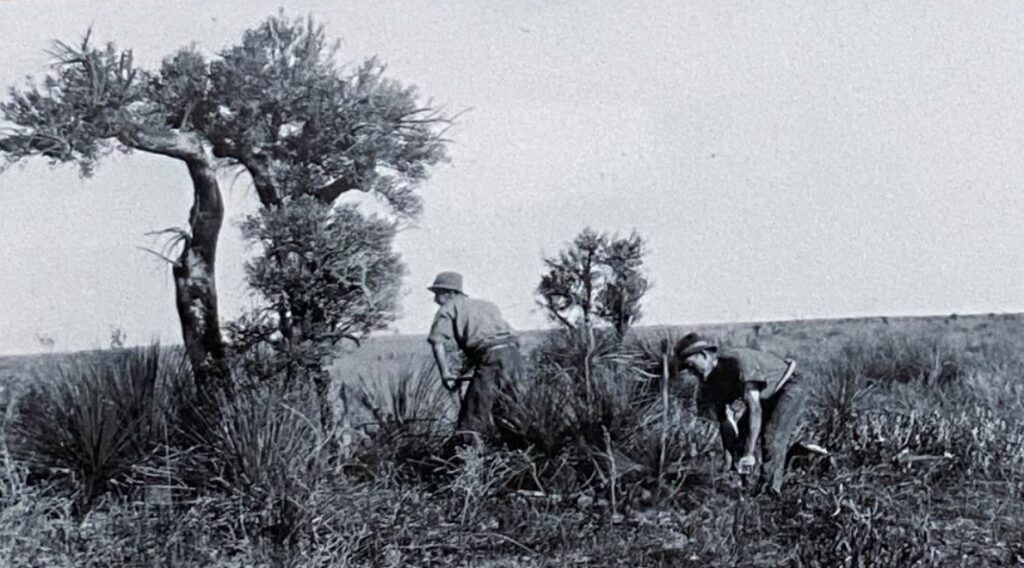
During the Great Depression the company struggled to raise necessary capital and went into liquidation in 1932. Helms had hoped to outlast the Depression by working two years without receiving his salary. Needing employment, Helms and his family left Esperance. He managed to get a job as a Ganger in charge of Unemployment Relief Workers at King’s Park in Perth. Later that year, he was then rehired by the Forests Department as Overseer in charge of its Relief Workers Program. In 1937 he was appointed as the Department’s Research Officer to conduct surveys in the jarrah forests.
In 1940, he was seconded to the Australian Forestry School as a relieving lecturer in mensuration, products, valuation, and protection. Later that year, Helms resigned from the Forests Department to take up an appointment as Assistant Research Officer of the Commonwealth Forestry Bureau stationed in Hobart, Tasmania. In 1942 he became Working Plans Officer and Post-War Planning Officer after the war.
In 1947, he then became a lecturer in Forest Management and Policy at the Australian Forestry School in Canberra. He retired in 1958 and died in Canberra in 1968, aged 77.
Helm’s keen interest in the Esperance sandplains region continued after he left, keeping a catalogue of cuttings and letters. These documents and letters were donated to the Esperance Historical Society and Museum by his son John Helms in 2015.
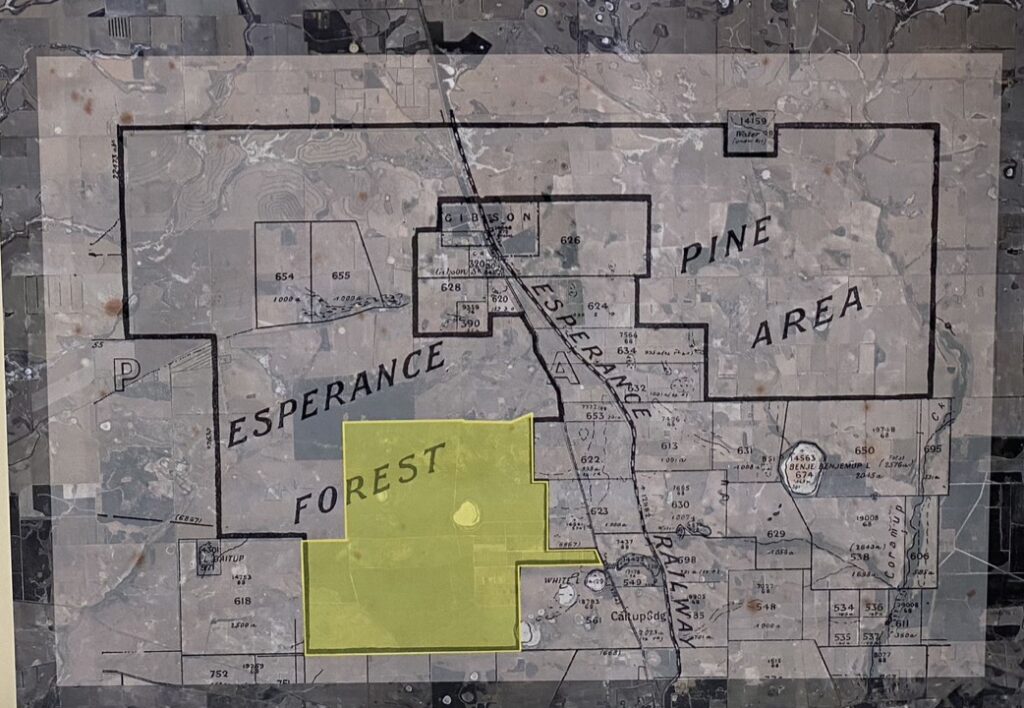
The first plantings in the arboretum date back to 1928 during Helms’ time. Plantings of different trees were undertaken to determine their usefulness in the Esperance area. Between 1973 and 1980, there were many additional experimental plantings to see which Australian species would thrive best on the sandplains to complement agricultural activities. The arboretum consists of over 120 plots of plantings of a wide range of tree species. Botanists established the plots under the guidance of Officer-in-Charge at Kalgoorlie, Peter Richmond. In 1985, another 20 species from throughout Australia were planted. Some species have shown that they are not suitable for the region, while others have flourished. The arboretum has been a great resource for farmers to assist them in selecting suitable trees to plant on their property.
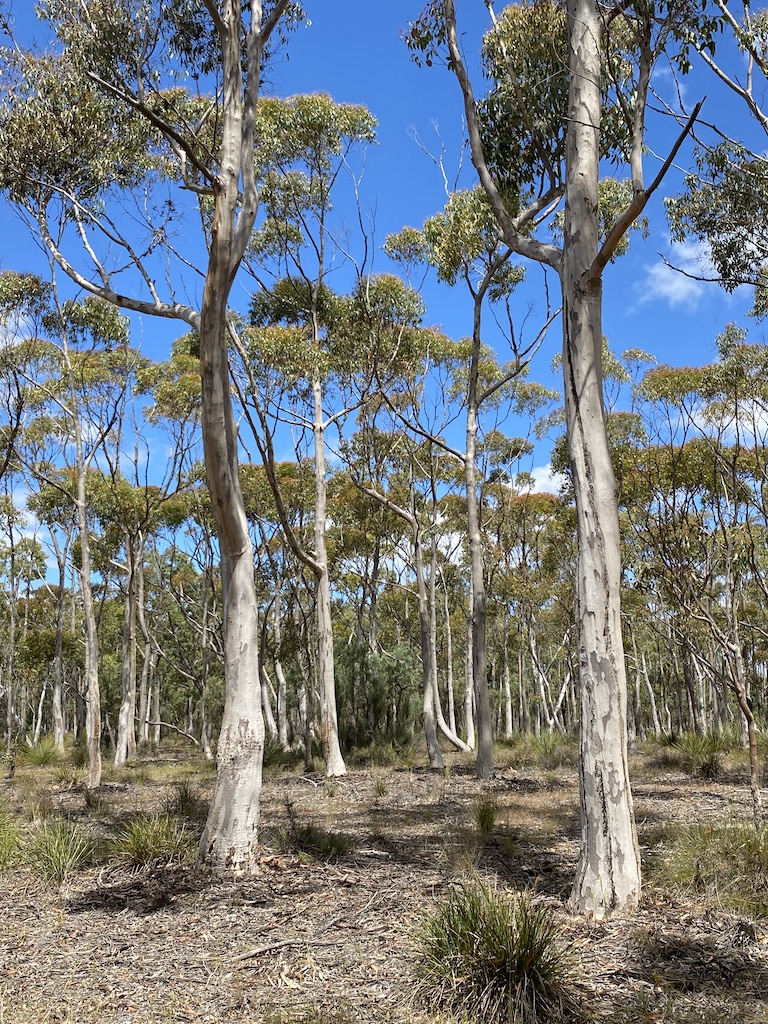
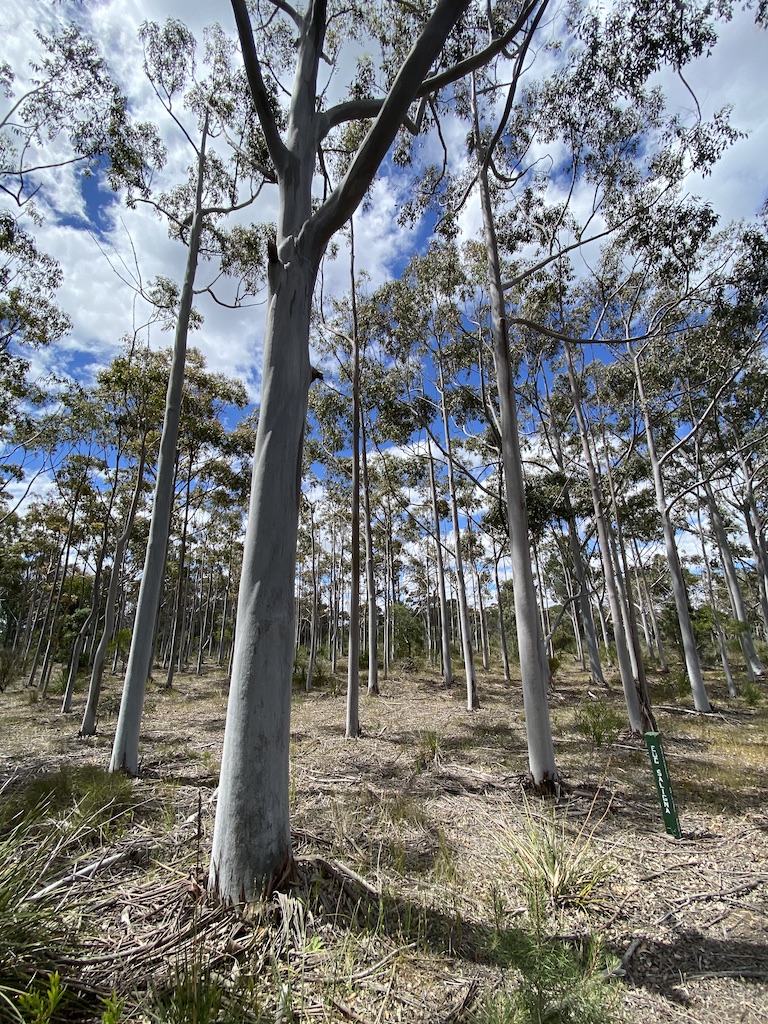
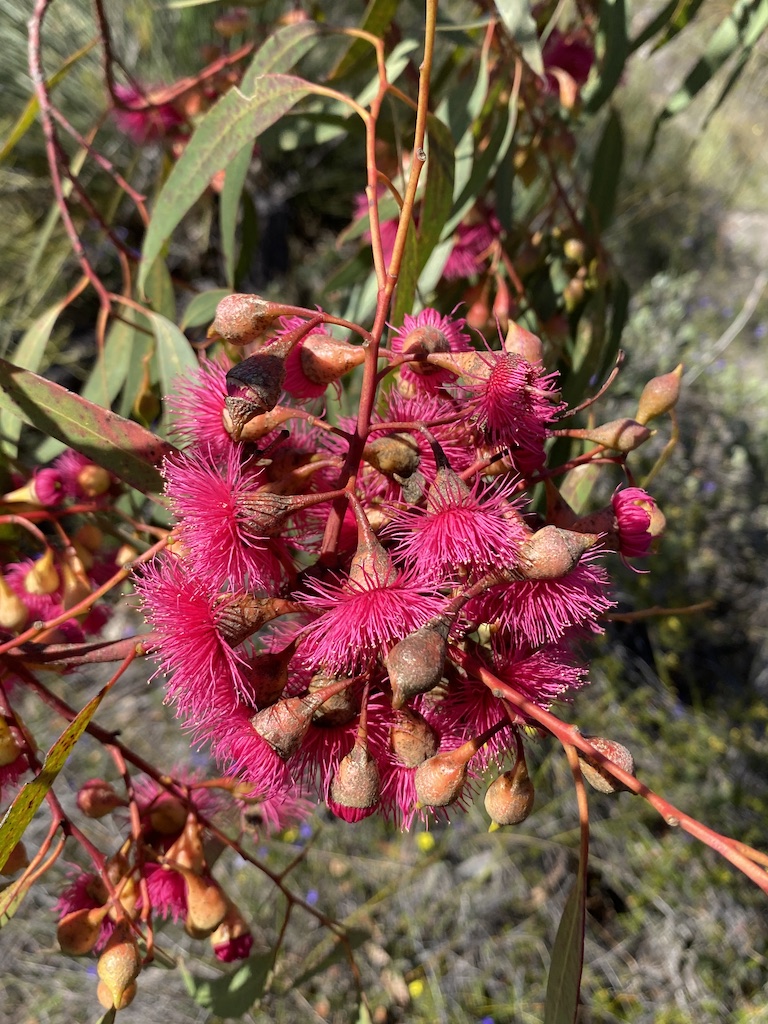
The pine plantation established in 1928-29 by Andy Helms adjoins the arboretum. The Forests Department established several experimental plots to assess the nutritional requirements of the pine in that area. They carried out further planting of pine between 1951 and 1956. By applying a limited amount of fertiliser, better soil preparation, and improved pine strains, they found that the trees planted in 1951 had surpassed the trees in the original plantation.
But it was the pioneering work of Andy Helms with trace elements that had a profound influence on early attempts to establish legume pastures on the infertile Esperance plains. His legacy is that despite the failure of the pine plantation, nutritional trials carried out at the site by Helms led to further research and the eventual development of the Esperance plains for farming.
Along with Fred Bow and Arthur Turner, Andy Helms also demonstrated the practicality of establishing trees on farms. This was a remarkable achievement considering that a short distance north of Esperance, the land rises sharply to a peneplain of heath country about 80 kilometres wide and extending east and west for many miles. Underlying this heath are low fertility sands with few plants exceeding one metre in height, except for limited areas of paperbark and yate in the swamps and scattered marlock, chittick and munji on higher ground.
In recognition of the pioneering work by Helms in the district, the arboretum was named in his honour in 1991.
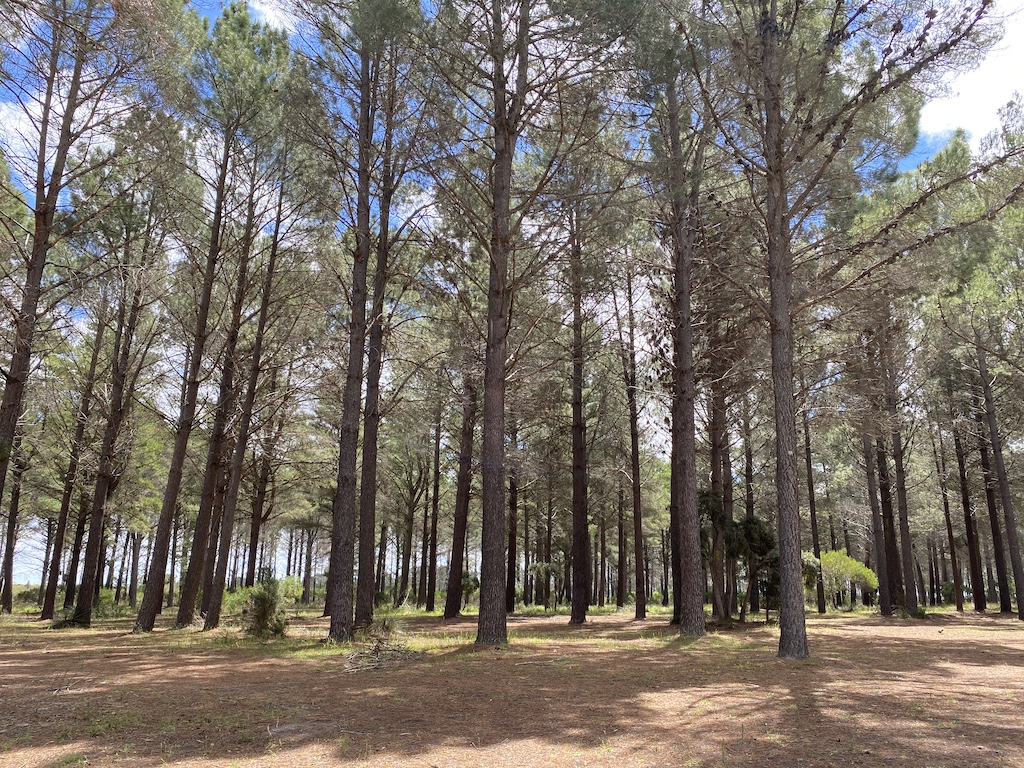
Many good blogs, but this one is exceptional.
A most informative article Robert about a previously unknown (to me) innovative pioneering forester.
Maybe he spent time with the east coast innovating pioneer forester EHF Swain.
Keep unearthing these premier foundation foresters.
There are to be sure many ‘mature’ aged AFS men who will have taken his classes.
gb
Thanks for sharing this story.
I always enjoy learning about forest history and the people that contributed so much to the industry.
There are still quite a few of the old arboreta established by the Forests Department and they are lovely places to visit.
I haven’t been to Helms Arboretum, so will have to get there.
There is also a Helms forest block near Nannup.
Hi Robert
In your introduction to this story, you mention that John Helms studied forestry in Canberra at ANU. That would have been in the early 1950’s. If that is the case, he would have studied at the Australian Forestry School at Yarralumla – not ANU.
Forestry training did not shift to ANU until 1967.
Cheers
Kevin Harding
Thank you Kevin for pointing out the error.
Good to see important stories being recorded Robert.
I joined the Forests Dept at Kalgoorlie in 1962, the area covered was immense and included the Esperance District. One of the jobs was planting and maintenance at the arboretum and distributing pinus pinaster bare root stock to farmers wanting to plant windbreaks. A lot of those are, still visible along roadsides now.
We also did some burning of heaps etc ready for planting.
We lived in a galvanised shed in the outer industrial area at Esperance, which was fitted out for accommodation, equipment storage.
Cheers John
Dear Robert
I appreciated your piece on Andy Helms. It would be interesting to look for other examples of father and son foresters – Peter Kanowski (Snr) and Prof Peter Kanowski and D.A.N. Cromer and Robin Cromer spring to mind.
Best wishes
John
What a great idea John. There are a number of examples of father/son, father/daughter, brother/brother, brother/sister and sister/sister combinations that come to mind.
Ross and Steve Dobbyns, Don and Ellis Nicholson, Ron and Ken Fussell, Peter and Penni Hewett (Ellis), Steve and Erica Raper, and the Baalmann(?) sisters are a few off the top of my head.
Do readers have others to contribute? John and I are thinking of compiling a list and perhaps a short bio of each combination might be written.
John Smith (JENS) was plantation manager at Tamar in 1985 when I started in 1985 with APPM Forests. His son Ian is if I recall correctly, an ANU grad and he worked as a forester for the same company when it was called North Forests.
Like a lot of other forestry professionals at the time, he went to work for state-owned Tasmanian Irrigation during the forest industry downturn in the 2000s. Not sure if he came back to forestry.
Last I heard Ian was working in NT or northern WA in forestry related projects
Thanks Ian. I should have picked that one up as I worked with Ian when I first arrived in Tasmania. He was still in forestry after he left but can’t recall the company. He told me all about his experiences as I caught up with him in the dying days of Gunns. We were trying to sell the water allocation for Emu River after Australian Paper had officially given up its licence.
I understand Ian has recently retired – bought a big US rig and fifth wheeler to do some travelling.
David Boomsma (first CEO of Southern Tree Breeding Association) and his father who was an expert on E. Viminalis.
Tony Stonjek Snr and Jnr (both Tech foresters)
Ross Price (1st Tech forester to be given full membership in IFA) and Tony
George (in my ANU forestry class of 81) and Jarryd Dashwood (with NSW FC at Dubbo)
Thanks Peter. They are some great additions to the list.
Dear Robert
Thanks for your piece on Andy Helms – grand old man of early forestry in NSW in the early 20s and then WA and the Australian Forestry School. He did not lecture to me as I was a student there in 1960-61. John Helms followed his father into forestry and was at AFS 1952-53, graduating Diploma of Forestry.
John did not graduate from ANU – forestry there did not start until the mid 60s when the AFS course was transferred to ANU; not sure but I think John did his first couple of years undergraduate training pre-AFS at Sydney Uni but he must might have been at the CUC and would then have graduated BSc Forestry from Melbourne. At the time AFS was affiliated with all the state universities, although Melbourne was linked to Victoria’s forestry school at Creswick – all very messy back then. In 1953 there was the Canberra University College (CUC) an offshoot of Melbourne University; CUC became the School of General Studies of ANU in 1960 (and AFS students (including moi) played rugby in the ANU teams from 1960 after much soul searching by the students, up til then AFS fielded its own rugby team in the ACT competition); the AFS became the Department of Forestry within ANU in 1965.
Andy’s father Rudolf was the first manager of the CSR Childers sugar mill in 1895 (mill closed in 1932 in favour of Isis Central) , and his mother Sabine was a noted botanist with several plants named after her by F M Bailey. Rudolf also wrote a couple of reports on the Snowy Mt catchments; the Helms always had an interest in the Snowies.
There is a bush reserve at Childers called Helms Scrub in her honour. By one of those coincidences in life, my dad was manager of the Childers Commonwealth Bank 1958-mid 60s and I had a survey camp on Kullogum forest just south of Childers in 1962, so I know that area well.
Rudolf’s brother was manager of CSR’s Condong mill in northern NSW for several years and introduced the cane quality system for cane at mill. An interesting family all round.
Cheers Ian
I met John Helms at the World Forestry Congress in Argentina in 2012. His wife is the late John Quick’s sister (born and raised in Roland, Tasmania). We had a conversation about Forth River Falls, which she used to visit as a child, now drowned under Lake Barrington. It wasn’t only Lake Pedder beach that was lost to the world by Hydro development!
Thanks for sharing this story.
There is a story that the pines at the Helms Arboretum helped solve the nutritional problems in the Esperance sand plain. A galvanized netting fence ran through the pines and the rows of pines close to the fence grew better. Helms recognised that the zinc from the fence was assisting and that led to trials on trace elements with zinc, copper and molybdenum being added to the fertiliser mix for the Esperance area with clover and other crops (and pines) thriving after that.
The Forests Dept planted extensive roadside windbreak plantings of P. pinaster, tuart (Euc gomphocephela) and other species. It was an annual winter job with crews from Kalgoorlie making the trip to Esperance for the planting. The windbreak trees are still evident today along roads in the Esperance area.